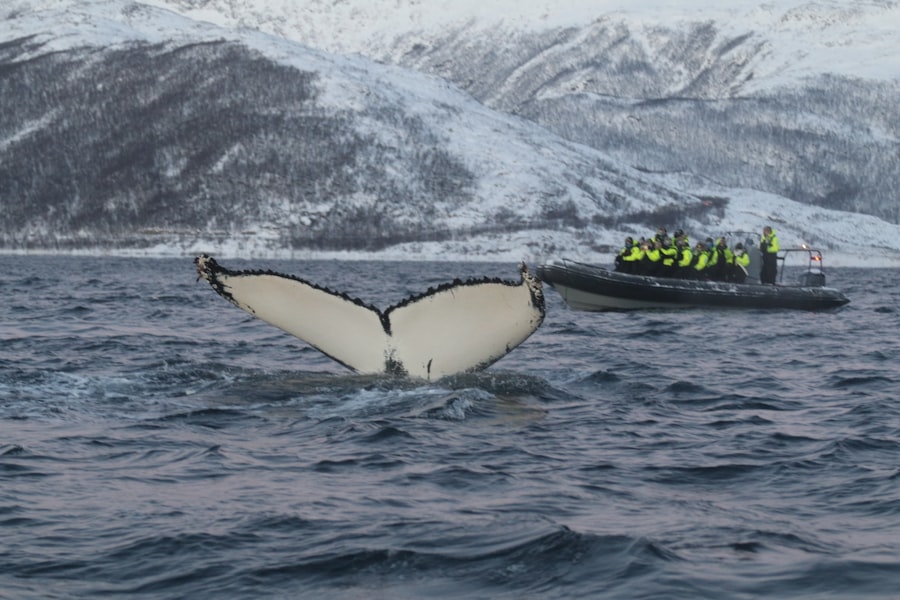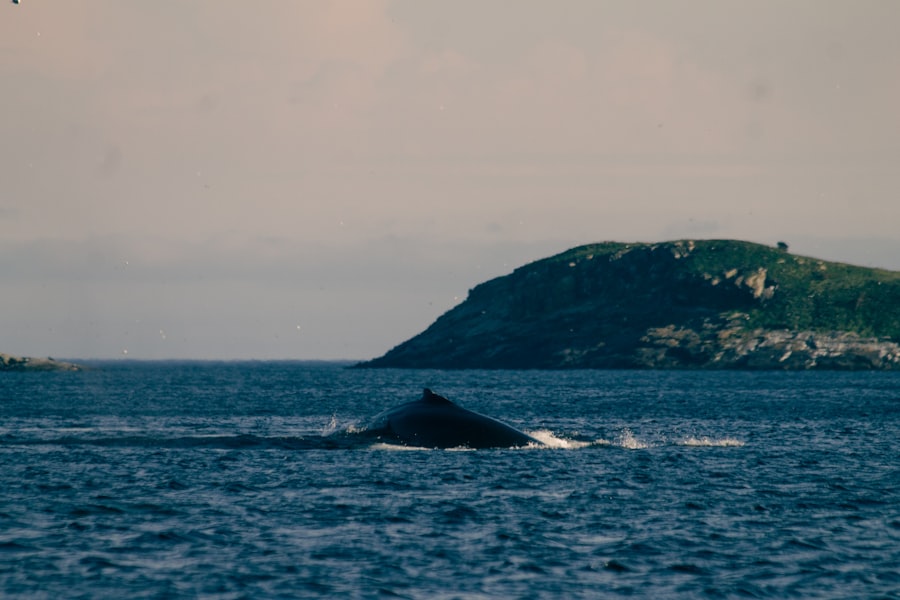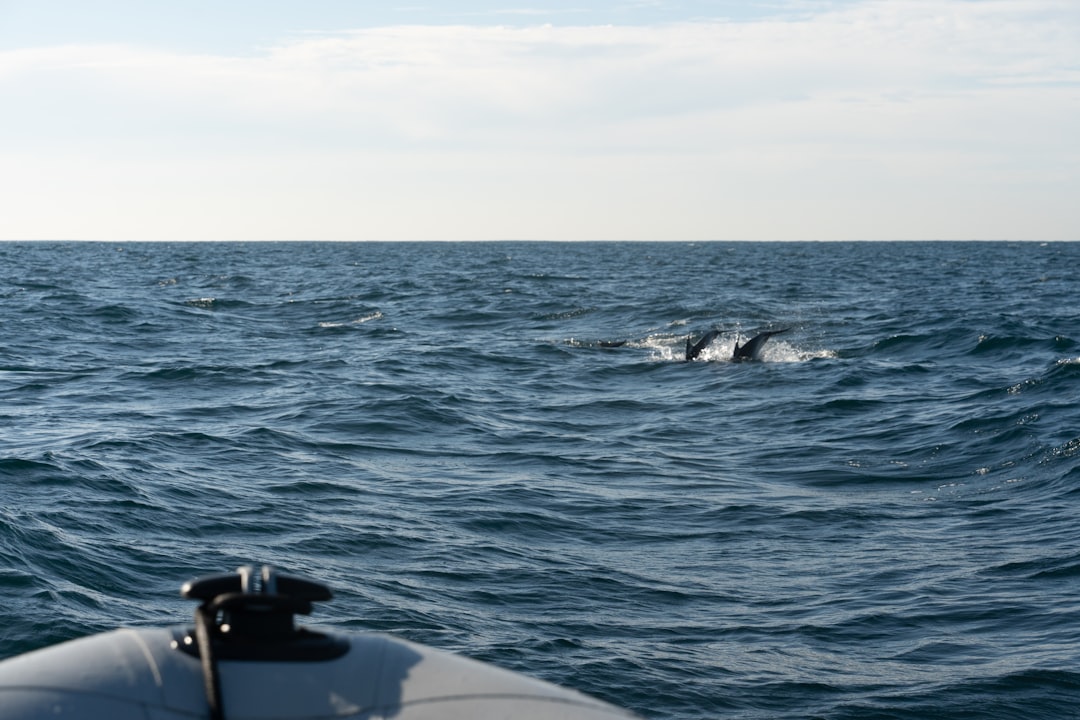The Drake Passage, a body of water situated between the southern tip of South America and Antarctica, is renowned for its tumultuous seas and rich marine biodiversity. This narrow stretch of ocean, measuring approximately 800 kilometers (500 miles) wide, serves as a critical conduit for ocean currents and plays a significant role in global climate regulation. The passage is named after the English explorer Sir Francis Drake, who navigated these waters in the late 16th century.
Its unique geographical position not only makes it a vital route for maritime navigation but also a crucial habitat for various marine species, particularly whales. The Drake Passage is characterized by its unpredictable weather patterns and strong currents, which can create challenging conditions for vessels traversing its waters. Despite these challenges, the passage is a hotspot for marine life, attracting a diverse array of species that thrive in its nutrient-rich waters.
Among these inhabitants, whales stand out as some of the most magnificent and awe-inspiring creatures. Their presence in the Drake Passage highlights the ecological significance of this region and underscores the need for ongoing research and conservation efforts to protect these majestic animals.
Key Takeaways
- The Drake Passage is a narrow body of water between South America’s Cape Horn and the South Shetland Islands of Antarctica, known for its rough seas and strong winds.
- The Drake Passage is an important feeding and breeding ground for various species of whales, making it a crucial area for their survival and conservation.
- The Drake Passage is home to a diverse range of whale species, including humpback whales, blue whales, orcas, and southern right whales.
- Whales migrate through the Drake Passage to take advantage of its rich food sources and to breed in the warmer waters, making it a vital part of their life cycle.
- Whales play a crucial role in the ecosystem of the Drake Passage, contributing to the balance of marine life and the health of the ocean environment.
The Importance of the Drake Passage for Whales
The Drake Passage serves as an essential migratory route for numerous whale species, providing them with access to feeding and breeding grounds. The nutrient-dense waters of the passage are teeming with krill and other marine organisms, making it an ideal location for whales to forage. As these marine mammals migrate between their feeding grounds in the Southern Ocean and their breeding sites in warmer waters, the Drake Passage acts as a critical link in their life cycle.
The abundance of food in this region supports not only whales but also a myriad of other marine life, creating a vibrant ecosystem. Moreover, the Drake Passage plays a pivotal role in the overall health of the Southern Ocean. Whales contribute to nutrient cycling through their feeding habits and excrement, which enriches the water and promotes phytoplankton growth.
This process is vital for maintaining the balance of marine ecosystems and supports the entire food web. The presence of whales in the Drake Passage is thus not only important for their survival but also for the health of the broader marine environment.
The Species of Whales Found in the Drake Passage

The Drake Passage is home to a diverse array of whale species, each with its unique adaptations and behaviors. Among the most commonly sighted species are the humpback whale, minke whale, and orca, or killer whale. Humpback whales are particularly notable for their acrobatic displays, often breaching and slapping the water with their fins.
These whales migrate thousands of kilometers each year, traveling from their feeding grounds in polar waters to warmer breeding areas. Their presence in the Drake Passage during migration highlights the importance of this region as a critical habitat. Minke whales, known for their smaller size compared to other baleen whales, are also frequently observed in the passage.
They are agile swimmers and can often be seen feeding on schools of fish and krill. Orcas, on the other hand, are apex predators that play a crucial role in maintaining the balance of marine ecosystems. Their complex social structures and hunting techniques make them fascinating subjects for study.
The diversity of whale species found in the Drake Passage underscores its significance as a vital habitat for these magnificent creatures.
Whale Migration Patterns in the Drake Passage
| Year | Number of Whales | Migration Direction |
|---|---|---|
| 2015 | 120 | Northbound |
| 2016 | 150 | Southbound |
| 2017 | 130 | Northbound |
| 2018 | 140 | Southbound |
Whale migration patterns in the Drake Passage are influenced by various factors, including food availability, breeding cycles, and environmental conditions. Many species undertake long migrations between their feeding grounds in nutrient-rich polar waters and warmer breeding areas further north.
This journey can span thousands of kilometers and often involves navigating through the challenging waters of the Drake Passage. The timing of these migrations can vary among species and is often dictated by seasonal changes in food availability. As krill populations fluctuate with ocean currents and temperature changes, whales must adapt their migration patterns accordingly.
Understanding these patterns is crucial for conservation efforts, as it allows researchers to identify critical habitats and times when whales are most vulnerable to threats such as shipping traffic and climate change.
The Role of Whales in the Ecosystem of the Drake Passage
Whales play a vital role in maintaining the health and balance of the ecosystem within the Drake Passage.
Their feeding habits contribute to nutrient cycling within the marine environment, as their waste products enrich the water with essential nutrients that support phytoplankton growth.
This process is fundamental to sustaining the entire food web, as phytoplankton forms the base of the marine food chain. Additionally, whales serve as indicators of ocean health. Changes in their populations or behaviors can signal shifts in environmental conditions or food availability.
For example, a decline in whale numbers may indicate overfishing or habitat degradation, prompting further investigation into potential threats to marine ecosystems. By studying whales and their interactions within the Drake Passage, scientists can gain valuable insights into the overall health of this critical marine environment.
The Impact of Climate Change on Whales in the Drake Passage

Climate change poses significant challenges to whale populations in the Drake Passage and beyond. Rising ocean temperatures can alter prey distribution and abundance, affecting whales’ ability to find food during critical feeding periods. As krill populations decline due to changing environmental conditions, whales may be forced to migrate further or adapt their feeding strategies, which can have cascading effects on their health and reproductive success.
Moreover, climate change can exacerbate other threats faced by whales, such as ship strikes and entanglement in fishing gear. As shipping routes shift due to changing ice patterns and increased maritime traffic in previously inaccessible areas, whales may find themselves at greater risk of collision with vessels. Additionally, ocean acidification resulting from increased carbon dioxide levels can impact marine ecosystems, further complicating food availability for these majestic creatures.
Addressing climate change is thus essential for ensuring the long-term survival of whale populations in the Drake Passage.
Whale Watching in the Drake Passage
Whale watching has become an increasingly popular activity in the Drake Passage, attracting tourists from around the world eager to witness these magnificent creatures in their natural habitat. Various tour operators offer excursions that provide visitors with opportunities to observe humpback whales, orcas, and other species up close while promoting awareness about marine conservation. These experiences not only foster appreciation for marine life but also contribute to local economies reliant on eco-tourism.
However, responsible whale watching practices are crucial to minimizing disturbances to these animals. Tour operators must adhere to guidelines that ensure safe distances are maintained from whales while avoiding excessive noise or disruption during critical feeding or breeding periods. By prioritizing sustainable practices, whale watching can serve as a powerful tool for conservation efforts while providing unforgettable experiences for those fortunate enough to witness these incredible animals.
Conservation Efforts for Whales in the Drake Passage
Conservation efforts aimed at protecting whale populations in the Drake Passage have gained momentum over recent years as awareness of their plight has increased. Various organizations work tirelessly to advocate for policies that safeguard critical habitats and mitigate threats posed by human activities. These initiatives often involve collaboration between governments, researchers, and local communities to develop comprehensive strategies that address both immediate concerns and long-term sustainability.
One significant aspect of conservation efforts includes establishing marine protected areas (MPAs) within the Drake Passage to provide safe havens for whales during critical life stages such as breeding and nursing. These protected zones help reduce human impacts on whale populations while allowing researchers to monitor changes in behavior and population dynamics over time. Additionally, public education campaigns aim to raise awareness about the importance of protecting these magnificent creatures and their habitats, fostering a sense of stewardship among local communities and visitors alike.
Research and Studies on Whales in the Drake Passage
Ongoing research and studies focused on whales in the Drake Passage are essential for understanding their behaviors, migration patterns, and overall health. Scientists employ various methods such as satellite tracking, acoustic monitoring, and genetic analysis to gather data on whale populations and their interactions with the environment. This research not only enhances knowledge about individual species but also contributes to broader efforts aimed at conserving marine ecosystems.
Collaborative research initiatives often involve partnerships between universities, governmental agencies, and non-profit organizations dedicated to marine conservation. By sharing data and resources, researchers can develop more comprehensive strategies for protecting whale populations while addressing emerging threats posed by climate change and human activities. The insights gained from these studies are invaluable for informing policy decisions that impact both whales and their habitats within the Drake Passage.
The Cultural and Historical Significance of Whales in the Drake Passage
Whales hold profound cultural and historical significance for many indigenous communities along the coasts surrounding the Drake Passage. For centuries, these majestic creatures have been woven into local folklore, traditions, and practices that reflect deep connections between people and nature. Indigenous cultures often view whales as symbols of strength and resilience, embodying values that resonate with their ways of life.
Historically, whaling was a prominent industry in this region during the 19th century, leading to significant declines in whale populations due to overexploitation. However, as awareness grew regarding the ecological importance of these animals, many communities shifted towards conservation efforts that prioritize sustainable practices over exploitation. Today, initiatives aimed at preserving whale populations not only honor cultural heritage but also promote ecological stewardship among future generations.
The Future of Whales in the Drake Passage
The future of whales in the Drake Passage hinges on collective efforts aimed at addressing environmental challenges while fostering sustainable practices that protect these magnificent creatures. As climate change continues to impact marine ecosystems globally, it is imperative that stakeholders—including governments, researchers, local communities, and tourists—work together to ensure that whale populations thrive within this critical habitat. By prioritizing conservation initiatives that safeguard essential feeding and breeding grounds while promoting responsible tourism practices, there is hope for a brighter future for whales in the Drake Passage.
Continued research will be vital for understanding how these animals adapt to changing conditions while informing policies that protect their habitats from human impacts. Ultimately, preserving the rich biodiversity of this unique marine environment will benefit not only whales but also countless other species that call the Drake Passage home.
The Drake Passage, a body of water located between the southern tip of South America and Antarctica, is known for its challenging conditions and rich marine biodiversity, including the presence of whales. For those interested in exploring more about the marine life in this region, a related article can be found on MyGeoQuest. This article delves into the unique ecosystem of the Drake Passage and the various species that inhabit it. To learn more, you can visit the article by clicking on this link.
WATCH NOW! Drake Passage: Earth’s Deadliest Waters Revealed
FAQs
What is the Drake Passage?
The Drake Passage is the body of water between the southern tip of South America and the northern tip of the Antarctic Peninsula. It is known for its rough seas and strong winds.
Are there whales in the Drake Passage?
Yes, the Drake Passage is home to a variety of whale species, including humpback whales, minke whales, and orcas. These whales are often spotted by travelers on cruises through the area.
When is the best time to see whales in the Drake Passage?
The best time to see whales in the Drake Passage is during the austral summer, which runs from November to March. This is when the whales migrate to the area to feed and breed.
What other wildlife can be found in the Drake Passage?
In addition to whales, the Drake Passage is home to a diverse range of wildlife, including seals, penguins, and various seabird species. This makes it a popular destination for wildlife enthusiasts and nature lovers.
